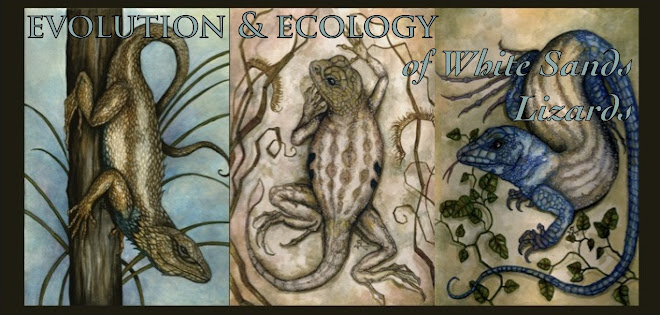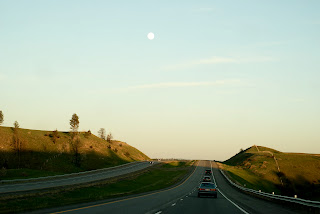Before tonight’s post, I should mention the names of my charismatic megafauna companions
– well, they are just H. sapiens sapiens
, but definitely
charismatic. Michaela Brinkmeyer is joining me in White Sands again this year
after she discovered she simply did not have enough after last field season. Isaiah
Hoyer and Jackie Howells are new additions… Jackie is from Berkeley, CA and
joining us in Alamogordo after her Wednesday flight.
ALSO, please leave comments or click "FOLLOW"! The more feedback I get, the more I am aware that people are actually reading these ramblings... and the more likely I am to be motivated to write!
and now...
Good evening from Southern Wyoming.
In keeping with our
meandering mentality, we collectively decided to venture through Yellowstone
National Park. This means we will be another two nights on the road (including
tonight)… but we thought the decision was well worth it at the time. And even
though we are now ‘behind schedule,’ we can certainly say our wayfaring was
well worth it…
Personally, I had the most mammalian specious day I have
perhaps ever had. Here’s the count…
1. Elk; Cervus canadensis
(well, not so super, but still exciting as the first sighting of the
day)
2. Mule Deer; Odocoileus hemionus
(again, kind of a boring creature of the ungulate kind)
3. Pronghorn; Antilocapra americana
(now we’re getting somewhere… although this North American antelope is ubiquitous throughout these massive square states, it is still always a pleasure to envision this lithe animal racing away from the long-extinct Pleistocene cheetah):
5. Grizzly Sow and two yearling cubs; Ursus arctos
(within five minutes of entering the park proper, we saw a crowd of adventurers with spotting scopes, binos and telephotos primed for the immortal capture of the mind and [digital] film):
6. Bison; Bison bison -creative latin name there
(these huge beasts were a new one to me, although as common as cattle on the prairie):
7. Female Bighorn Sheep; Ovis canadensis
(not new to me, although always special to see them so close and nicely dappled by the three-o’clock sunlight):
8. A smiling coyote; Canis latrans
(no photo... we just glanced him from the road)
...and just when we were relishing the day’s biodiversity, in the warm slanted light south
of the Tetons, I spot three or four little rabbits in the field… and yes,
rabbits are lovely… but alas, Michaela points out, rabbits do not have long
fuzzy white-tipped tails. Ah yes, Mother Nature decided that we needed a little
more furry icing on our fauna-cakes
9. Three little Vulpes vulpes pups darting in and out of their suburban burrows:
Thanks Isaiah for the long driving effort today so I could indulge in my
photographic needs… driving, which, by the way, is not completed as I type this
blog into a word document while still on the road to Rawlins, WY.
Goodnight ungulates, ursids, canids…
Oh! Was that just a grey owl!? Oh my yes it was.
-S. Des Roches






















